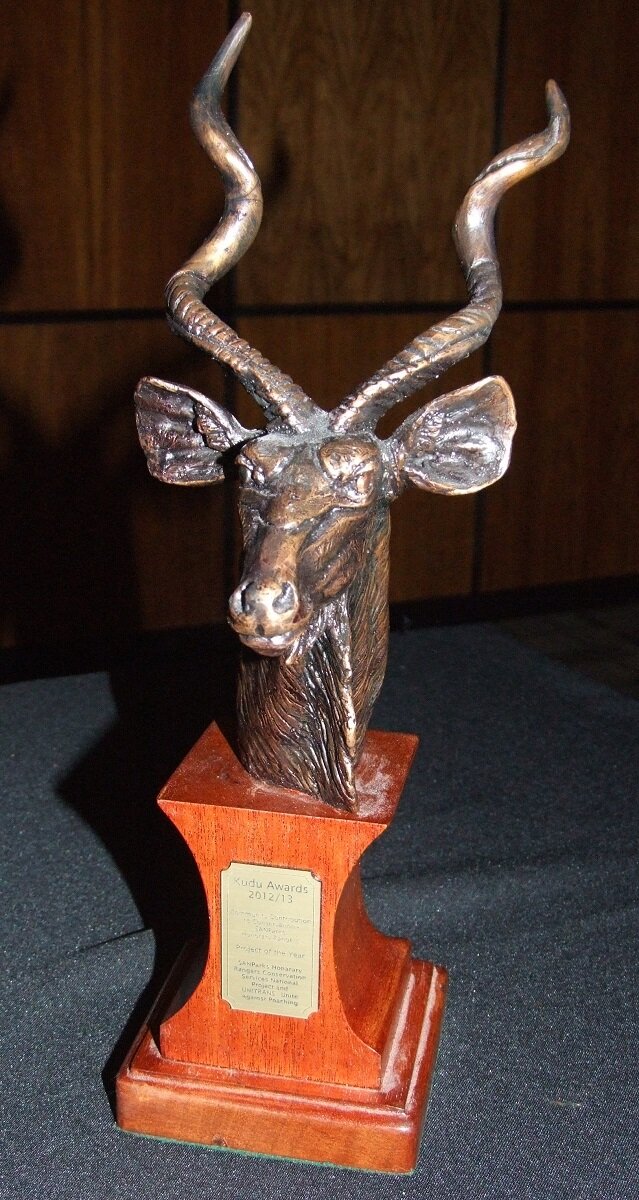Warning: This page contains some graphic images.
|
Defense stance |
A "Crash" of Rhinos |
Black Rhino mother & Calf |
|
|
|
De-horning a rhino |
 |
Borakolalo's poached rhino- still alive |
|

|

|
 |

|

|

|

|

|

|

|

|

|

|

|

|
The following guides to identification and estimating the ages of Rhino calves in the wild has been reproduced with generous permission of the “Rhino Management Group”and are included in the Field Rangers Guide.



Identification codes for rhinos
Field identification of live Rhinos is usually done by notching the ears in designated areas. This can only be done when the rhino is immobilised for a specific reason. Individuals are then able to be identified without having to capture them and this becomes possible using a good set of binoculars.Small notches are carved into the ears. The left ear denotes ones and the right ear denotes tens, so various combinations are used to determine the animals number. A hole in the left ear denotes 100 and one in the right ear 200. The pieces of the ear from the notching can be used for DNA sampling and future identification.

Prepoceros rhinoceros
This article first appeared on Roxanne Reid's travel and wildlife blog http://bit.ly/roxblog and is reproduced with permission.
The rhino is a homely beast,
For human eyes he's not a feast.
Farewell, farewell, you old rhinoceros,
I'll stare at something less prepoceros. (Ogden Nash)
You can’t visit Berg-en-Dal in the south of the Kruger National Park and not become intrigued by these prehistoric-looking beasts. Fortunately, the camp has provided just the place for you to find out more about them – the Rhino Hall.
Let’s start with names. Why is it called the white rhino when it’s grey? And why is its brownish-grey cousin called the black rhino? Well, it seems that the white rhino – or more correctly, the square-lipped rhino because of its wide flat mouth, which is supremely well designed for its job as a lawn mower – was referred to as ‘wijd’ (wide) in Dutch. Somehow that became misunderstood or corrupted into ‘white’ by the dippy English. And while they were on a roll with colours, they simply dumped the name ‘black’ on the slightly smaller rhino so they didn’t have to think too hard.
The black rhino is more correctly called the hook-lipped rhino because of the almost finger-like protrusion of his upper lip, which allows him to grab hold of the leaves and shoots he loves to munch on. That prehensile lip is almost as clever as the tip of an elephant’s trunk, even allowing him to open gates or car doors if he really puts his mind to it.
Despite their armour-plated appearance, rhinos are fairly sensitive souls. Their skin may be an impressive 12-15 centimetres thick, but it’s actually quite susceptible to sunburn and insect bites. That’s why they love to wallow in a mud bath, caking themselves in a nice UV-protective, parasite-slaying mudpack. Since rhinos can’t sweat, the water also helps to keep them from overheating.
Physically, they’re impressive in many ways. The second biggest land mammal, a white rhino can stand six feet tall at the shoulder and weigh 2 300 kilograms, which is about the same as 32 average-sized men. For all their bulk – a group of rhinos is rather appropriately called a ‘crash’ – they’re very agile and can turn quickly in a small space and charge at 45 kilometres an hour, snorting like a steam engine. In fact, they have quite an extended vocabulary of snorts, grunts, growls, squeaks and bellows to communicate their varied emotions and anxieties.
As compensation for their poor eyesight, they have large ears that can rotate to pick up sounds from many directions. The thick soles of their feet act much like your expensive trainers to absorb shock and cushion their stubby little legs. Even the rhino’s toilet habits are worthy of note. They defecate in middens, great big piles of dung.
The males in particular scatter the dung with their hind legs to advertise their dominance over a particular patch (though black rhino females also use middens). Another way for the males to show who’s boss is to spray urine backwards against trees and shrubs as a clear warning sign to anyone who may be getting a little uppity.
Rhino Research - Read more click here













 Mitec Solutions
Mitec Solutions